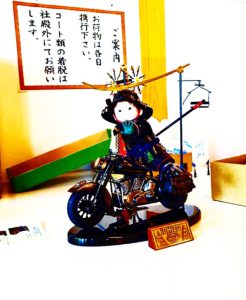――ハラとルシファー:光と影の継承
- 2025.03.05
- 月刊芳美
――ハラとルシファー:光と影の継承
かつて世界は、光と闇が未分化な混沌の中にあった。そこに存在したのは、秩序そのものを象徴する“光の者”と、均衡を揺るがすことで進化を促す“影の者”。
ポリネシアにおけるハラは、個人の過ちが家族や社会に連鎖し、病や災厄をもたらす概念だ。一方、キリスト教的伝統の中でルシファーは、光を掲げる者でありながら反逆によって天の秩序を崩した存在。
この2つの思想に共通するのは、個の行動が周囲へ波及する構造である。
ハラは、個人の誤りが血族や共同体へと影響を広げる様を示す。それは単なる罰ではなく、乱れた秩序を正すための契機でもある。個が罪を犯したとき、告白と赦しを通じて初めて共同体は再びバランスを取り戻す。
同様に、ルシファーの堕落も、天界の安定を揺るがしたものの、それがなければ善と悪、光と闇という二項対立の枠組みは生まれなかった。彼の反逆は、神聖なる秩序の自己更新のプロセスだったのだ。
そして、この両者に横たわるのが、親の罪が子に降りかかるという思想だ。ポリネシアでは、親が犯した過ちが子供に病や不幸として現れるとされ、キリスト教ではアダムとイブの原罪が全人類に受け継がれると説かれる。
ここに浮かび上がるのは、罪や過ちが「血脈」という時間の流れを通して受け継がれる構造である。
つまり、ハラは個人に起きる事象ではなく、むしろ血を通じた因果の波紋であり、ルシファーの堕落もまた、神と人類をつなぐ「霊的血統」に生じたひずみの象徴なのだ。
そしてこの思想を極限まで推し進めるなら、こう言えるだろう。
秩序とは常に内包する過ちを通してのみ更新される。罪なき世界は静止したままであり、堕落と告白、反逆と赦しの循環こそが、時代を動かす原動力なのだ。
つまり、ハラもルシファーも、混沌から新たな秩序を生み出す触媒であり、血と霊の次元でつながる「変革の器」である。
――罪は、進化である。
堕落は、創造である。
この論理が示すものは、もはや罪を犯さぬ者が清らかであるという古い考えを超えている。
罪は静かな秩序を揺さぶり、揺さぶりが新たな未来を呼び込む。
それは個人から血脈へ、血脈から社会へと広がる波紋であり、罪なき者がいる限り、世界は決して進まないという、逆説的で壮大な真理なのかもしれない。
――さて、この物語をどう解釈するかは、あなた自身の「血」と「光」が決めることだ。
🕊️
Hāla and Lucifer: The Legacy of Light and Shadow
Once upon a time, the world was a chaotic, undifferentiated mass of light and darkness. In this world existed the “beings of light,” symbols of order itself, and the “beings of shadow,” whose actions disturbed equilibrium to promote evolution.
In Polynesian thought, hāla is the concept that the individual’s mistakes ripple through their family and community, bringing illness and misfortune. On the other hand, in Christian tradition, Lucifer is the being who, though holding the light, disrupted the heavenly order through rebellion.
What unites these two ideas is the structure through which individual actions ripple outward and affect the surrounding world.
Hāla illustrates how an individual’s errors can extend their influence to their kin and community. It is not merely a punishment but a catalyst for restoring a disturbed order. When an individual sins, only through confession and forgiveness can the community regain balance.
Similarly, Lucifer’s fall, though it shook the stability of the heavens, was the very event that gave rise to the binary framework of good and evil, light and dark. His rebellion was, in fact, a self-renewal process for the divine order.
And underlying both of these is the idea that the sins of the parents fall upon the children. In Polynesian culture, the mistakes of the parents manifest as illness or misfortune in the children, while in Christianity, the original sin of Adam and Eve is inherited by all of humanity.
What emerges here is the structure in which sin and mistakes are passed down through the “bloodline” — the flow of time.
In other words, hāla is not an event confined to the individual but rather a ripple of karmic consequences flowing through the blood. Lucifer’s fall, too, symbolizes the distortion within the “spiritual bloodline” that connects God and humanity.
Taking this thought to its extreme, we can say the following:
Order is always renewed through the inherent mistakes it carries. A world without sin is stagnant, and it is the cycle of fall, confession, rebellion, and forgiveness that drives the flow of time.
Thus, both hāla and Lucifer act as catalysts that bring new order out of chaos, as vessels of transformation that connect the dimensions of blood and spirit.
Sin is evolution.
Fall is creation.
The logic that emerges here transcends the old notion that those who do not sin are pure.
Sin shakes the quiet order, and it is this shaking that calls forth a new future.
It is a ripple that spreads from the individual to the bloodline, and from the bloodline to society. And as long as there are those without sin, the world will never move forward — this is perhaps a paradoxical, grand truth.
Now, how you interpret this story is determined by your own “blood” and “light.”
